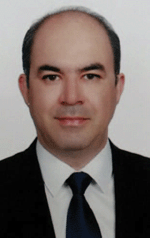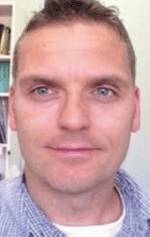Conformance control for production optimisation using polymer nanocomposite hydrogels
Reza M. Rudd A C , Ali Saeedi A and Colin D. Wood BA Curtin University, Bentley WA 6102, Australia
B CSIRO, 26 Dick Perry Avenue, Kensington WA 6151, Australia
C Corresponding author. Email: reza.mohiedinrudd@curtin.edu.au
The APPEA Journal 60(2) 658-661 https://doi.org/10.1071/AJ19013
Accepted: 27 February 2020 Published: 15 May 2020
Abstract
Conformance control is a major challenge in hydrocarbon recovery operations. One of the effective technologies for improving the conformance of a flood front and modifying the injected fluid profile is the application of polymer hydrogels. In this technique, polymer hydrogels are prepared as gel particles, which are injected into the reservoir to block-off preferential flow paths and thief zones, such as fractures and high permeability zones. Subsequently, the fluid injected as part of oil recovery operation would be directed and forced to pass through low permeable zones and sweep more hydrocarbon mass towards the production wells. Depending on the situation, this technology can result in a considerable incremental hydrocarbon recovery from a reservoir. In the present research, nanotechnology was combined with polymer engineering to develop a novel polymer nanocomposite hydrogel with supreme properties, as confirmed using advanced rheological characterisation. Subsequently, the performance of the newly developed nanocomposite hydrogel was tested using a specially designed core flooding setup and procedure. The core flooding results showed that the application of this novel hydrogel could increase the oil recovery by up to 16% under laboratory conditions.
Keywords: enhanced oil recovery, grafting, nanotechnology, polymer hydrogel, profile modification, reservoir engineering, water shut-off.

Reza M Rudd is a PhD candidate in the Department of Petroleum Engineering at Curtin University. His research focuses on the application of polymer engineering and nanotechnology in developing new technologies in the oil and gas industry. He has been a professional Project Manager since 2014 and is a Director of the Project Management Institute Western Australian Chapter. Concurrent with his PhD studies, he teaches project management at Curtin University and been involved in practice and research in project management as well. He has over 15 years of experience in polymer development for the oil and gas industry. He holds a bachelor’s and master’s degree in Polymer Engineering. |

Ali Saeedi holds a PhD in Petroleum Engineering and is an Associate Professor at Curtin University, Perth, Western Australia. He is leading the Reservoir Engineering Research Group. During his time at Curtin University, in addition to his teaching responsibilities, he has been involved in several research and commercial projects, mainly focusing on experimental study of multiphase flow in porous media. He is a member of Society of Petroleum Engineers and Society of Core Analysts. |

Colin D Wood holds a PhD in Polymer Chemistry. He is the Team Leader: Production Technologies and Process Chemistry at CSIRO. |
References
Al-Adasani, A., and Bai, B. (2010). Recent developments and updated screening criteria of enhanced oil recovery techniques. In ‘International Oil and Gas Conference and Exhibition in China, 8-10 June, Beijing, China.’ (Society of Petroleum Engineers).Alvarado, V., and Manrique, E. (2010). Enhanced oil recovery: an update review. Energies 3, 1529–1575.
| Enhanced oil recovery: an update review.Crossref | GoogleScholarGoogle Scholar |
Bai, B., Li, L., Liu, Y., Liu, H., Wang, Z., and You, C. (2007). Preformed particle gel for conformance control: factors affecting its properties and applications. SPE Reservoir Evaluation & Engineering 10, 415–422.
| Preformed particle gel for conformance control: factors affecting its properties and applications.Crossref | GoogleScholarGoogle Scholar |
Lake, L. W., Johns, R., Rossen, W. R., and Pope, G. A. (2014). ‘Fundamentals of enhanced oil recovery.’ (Society of Petroleum Engineers: Richardson, TX).
Muggeridge, A., Cockin, A., Webb, K., Frampton, H., Collins, I., Moulds, T., and Salino, P. (2014). Recovery rates, enhanced oil recovery and technological limits. Philosophical Transactions of the Royal Society A: Mathematical, Physical and Engineering Sciences 372, 20120320.
| Recovery rates, enhanced oil recovery and technological limits.Crossref | GoogleScholarGoogle Scholar |
Sang, Q., Li, Y., Yu, L., Li, Z., and Dong, M. (2014). Enhanced oil recovery by branched-preformed particle gel injection in parallel-sandpack models. Fuel 136, 295–306.
| Enhanced oil recovery by branched-preformed particle gel injection in parallel-sandpack models.Crossref | GoogleScholarGoogle Scholar |
Sheng, J. J. (2010). ‘Modern chemical enhanced oil recovery: theory and practice.’ (Gulf Professional Publishing: Burlington, MA).
Thomas, S. (2008). Enhanced oil recovery-an overview. Oil & Gas Science and Technology-Revue de l’IFP 63, 9–19.
| Enhanced oil recovery-an overview.Crossref | GoogleScholarGoogle Scholar |
Zolfaghari, R., Katbab, A. A., Nabavizadeh, J., Tabasi, R. Y., and Nejad, M. H. (2006). Preparation and characterization of nanocomposite hydrogels based on polyacrylamide for enhanced oil recovery applications. Journal of Applied Polymer Science 100, 2096–2103.
| Preparation and characterization of nanocomposite hydrogels based on polyacrylamide for enhanced oil recovery applications.Crossref | GoogleScholarGoogle Scholar |


